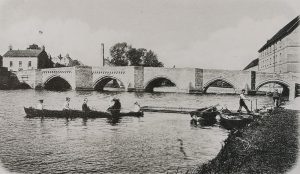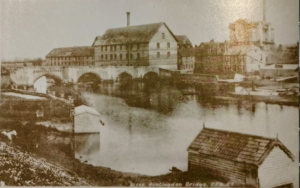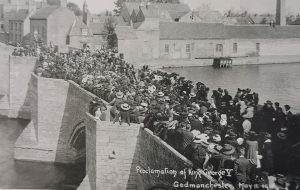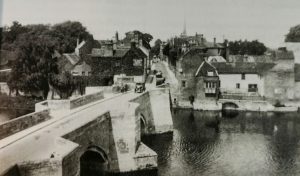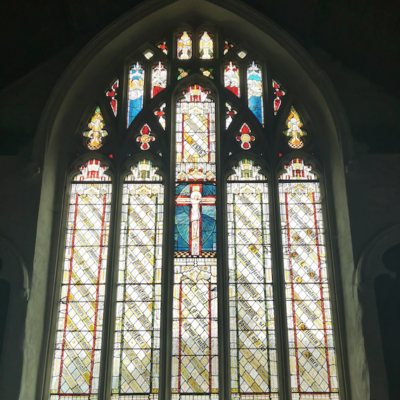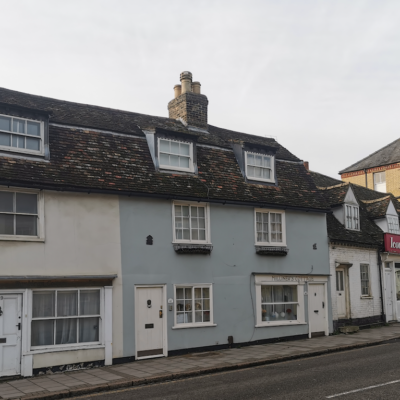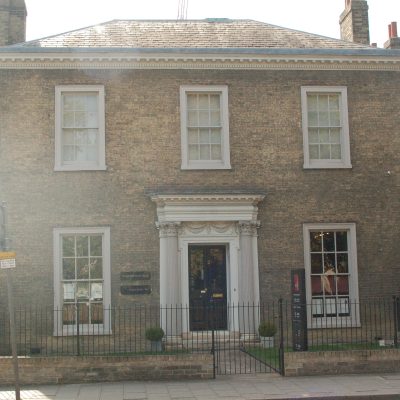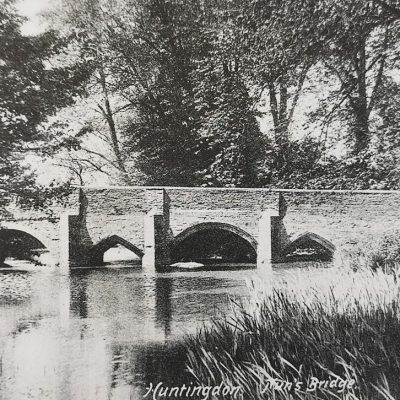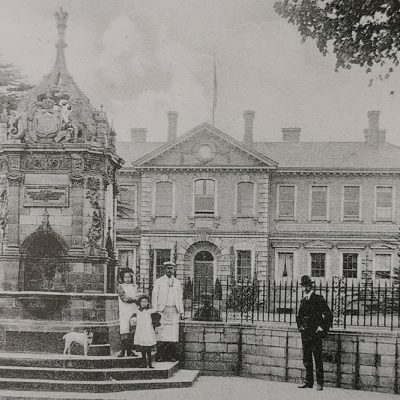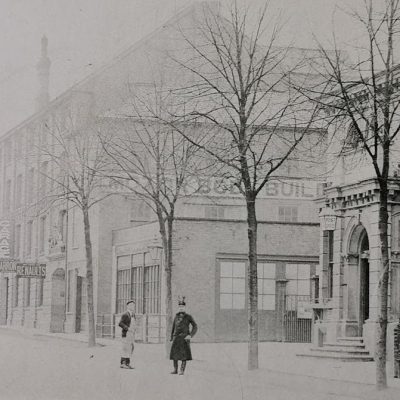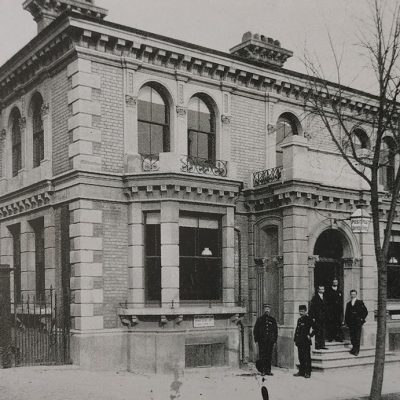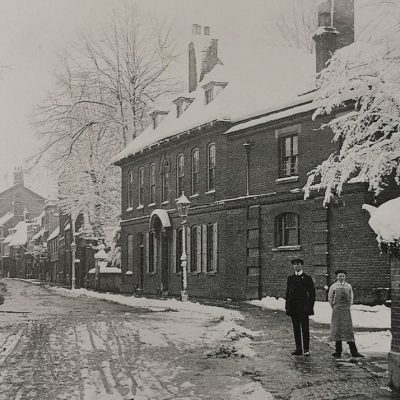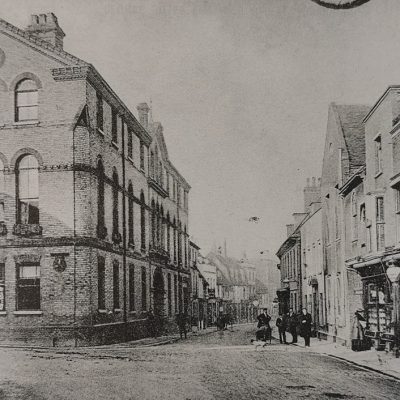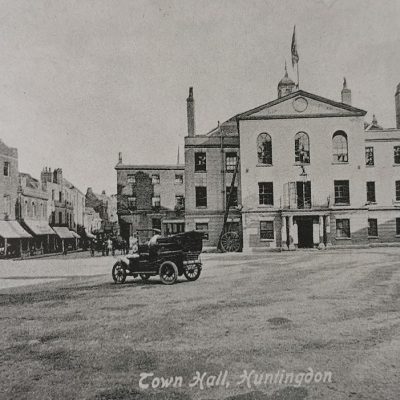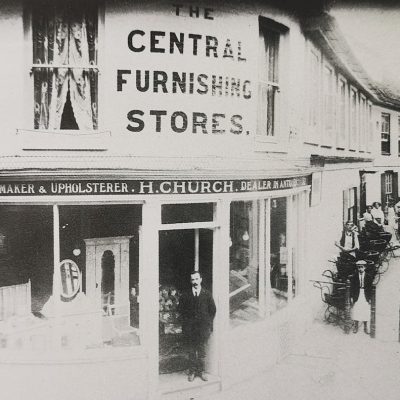Search by topic
- archaeology
- Building of Local Interest
- chapel
- charity
- church
- crime
- dressmaker
- fire
- Great Eastern Railway
- Listed building
- Mapping Relief
- medieval
- oral history
- poverty
- Public House
- Religious House
- Roman
- scholar
- school
- Then and Now
- tudor
- women
- work
- world war one
- world war two
Search by text
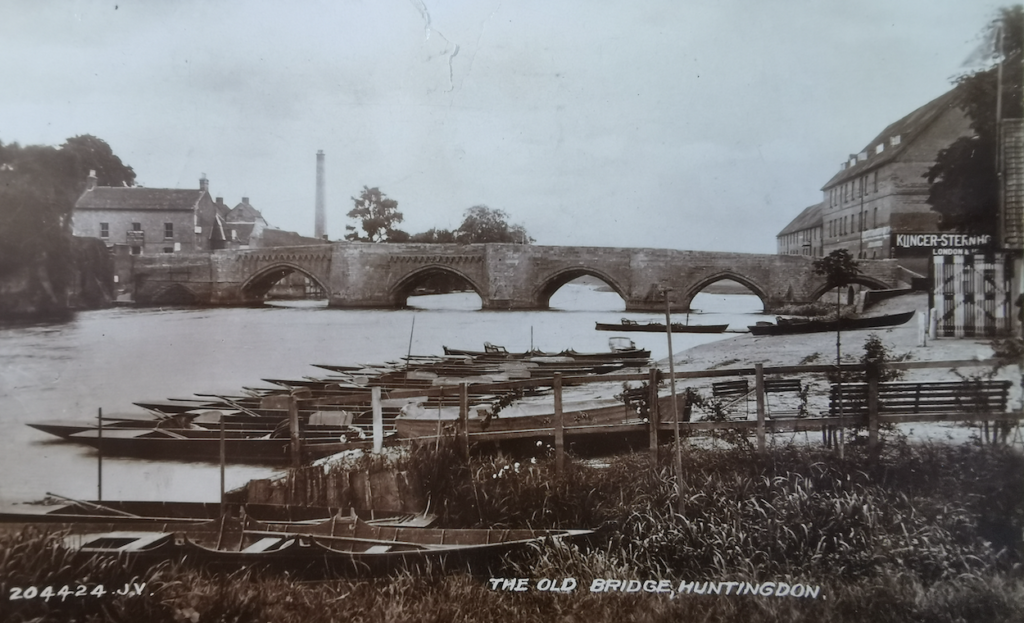 Old Bridge, Huntingon
Old Bridge, HuntingonOld Bridge, Huntingdon
History of the Old Bridge, Huntingdon
Listed building:
Circa 1300 but repaired over the centuries. Of stone throughout, with 6 pointed arches with cutwaters and refuges on both sides. There is a band of trefoil decoration in the form of corbelling over 2 arches these are probably the most ancient part of the bridge. A fine and famous example of a medieval bridge. The 3rd arch was replaced by a drawbridge during the Civil War.
The bridge is the likely location of the disappearance of Police Constable Thomas Saunders Lamb in 1841. The story of Lamb is told in Cambridgeshire Crimes by John Bell.
PC Lamb was based at the police station in the High Street. On the evening of 22nd December Lamb was standing on the Huntingdon side of the town bridge. The River Ouse was in full flood.
Lamb failed to return to the police station at the end of his shift and the next morning a search was started. All his clothing including a good suit was found at his lodgings. He was at no other nearby location; two weeks pay was due on the 24th December and his was expecting £2 gratuity from the Council.
On 1st January 1842 Lamb’s top hat was found in rushes at the water’s edge in Hartford, downstream. On 16th February his body was found. There was no sign of violence on his body. The coroner’s verdict was ‘found drowned’.
However, in 1867 a John Negus was convicted of forgery in London. In prison, he related to the governor that he had been witness to an event in Huntingdon in December 1841 when he was 15 years old. At 2.30am on the morning that PC Lamb met his death, Negus had been in the company of a prostitute in Priory lane, Huntingdon. He had seen five people leave the Rising Sun pub. He named all those he had see; one was PC Lamb who was either unconscious or dead. He watched the other four drag Lamb’s body to the bridge and then throw it into the water.
On the basis of this evidence the case was reopened. One of the four alleged culprits, Edmund Shippey was tracked down. He was put on trial for murder but the hury returned a verdict of ‘not guilty’.
Contribute
Do you have any information about the people or places in this article? If so, then please let us know using the Contact page or by emailing capturingcambridge@
License
This work is licensed under CC BY-NC-SA 4.0





